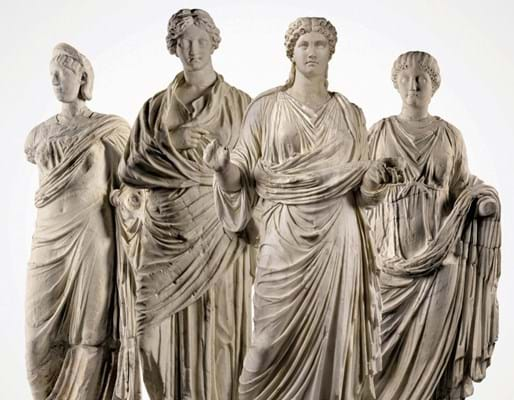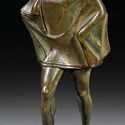The decision to do so was made after allegations appeared in the press of smuggled artefacts being offered through its London rooms in the 1980s and ‘90s (in May 1997, ATG reported that Sotheby’s took issue with many of the allegations).
Offering only 66 lots, an indicator of just how cautious the auction house is these days, the June 12 sale took place in New Bond Street. Assembled by sculpture specialist and world-wide department head Florent Heintz, it majored on classical marbles with some pottery.
Judging by the warm applause at the sale’s end, Sotheby’s return to the fold is welcome, not least as it bolsters London’s position as a major antiquities hub alongside Paris and New York. One dealer told ATG that the department had done a “remarkable job in researching and discovering provenance. They are to be commended”.
While there was no runaway star, the sale was solid throughout, punctuated with bullish prices. In some cases, buyers were paying three or four times the guides to secure pieces distinguished by provenance, market freshness and quality.
In total, £2.84m changed hands with 79% of lots sold, 90% by value.
Larger than life
While the top lot was a £600,0000 Roman marble bust, the sale’s biggest collective price came from a group of larger-than-life size Roman marble figures of women.
The c.2nd century AD pieces, which had some later restorations, had been acquired in London in the 1960s, and spent the second half of the century set in a colonnade around a swimming pool in the opulent ‘El Cerro’ villa in Jamaica.
The quartet sold to three different private buyers at a combined £910,000, with the most expensive and commanding statue of the group selling on top estimate at £350,000.
Another marble figure to draw stiff competition was a Roman relief of a dancer from c.1st century AD. Estimated at £15,000-25,000, the 18½in (47cm) high piece attracted bids in the room and on the phone before it was eventually knocked down to a private buyer bidding via the phone at £82,000.
The dancer, described as being in an unusual pose, came from a French private collection and had probably once formed part of a circular base of dancing figures. It had been partly restored in the 18th century.
A small 6in (15.5cm) bronze figure from the Hellenistic period packed a big punch, selling for three times its top guide at £90,000 to a private buyer. The athlete or actor is one of only a handful known.
It had a stellar provenance, tracing back to a Hotel Drouot sale in 1866 of items belonging to the Vicomte Louis-Félix De Nolivos. At the time, the piece was catalogued as a figure of Hercules, dressed in the poisoned robe that would later kill him.
Its last appearance on the market had been in the late 19th century, and since then, it had belonged in a Swiss family collection based in Lugano.
Elsewhere, a finely carved and completely original Roman marble bench or table leg, c.1st century AD, soared to double its top guide at £60,000 with room, phone and online bids.
Measuring 2ft 2in (66cm) long, it closely resembles an example in Sir John Soane’s Museum in London, but unlike the Soane’s pair, had retained its lion heads.



















